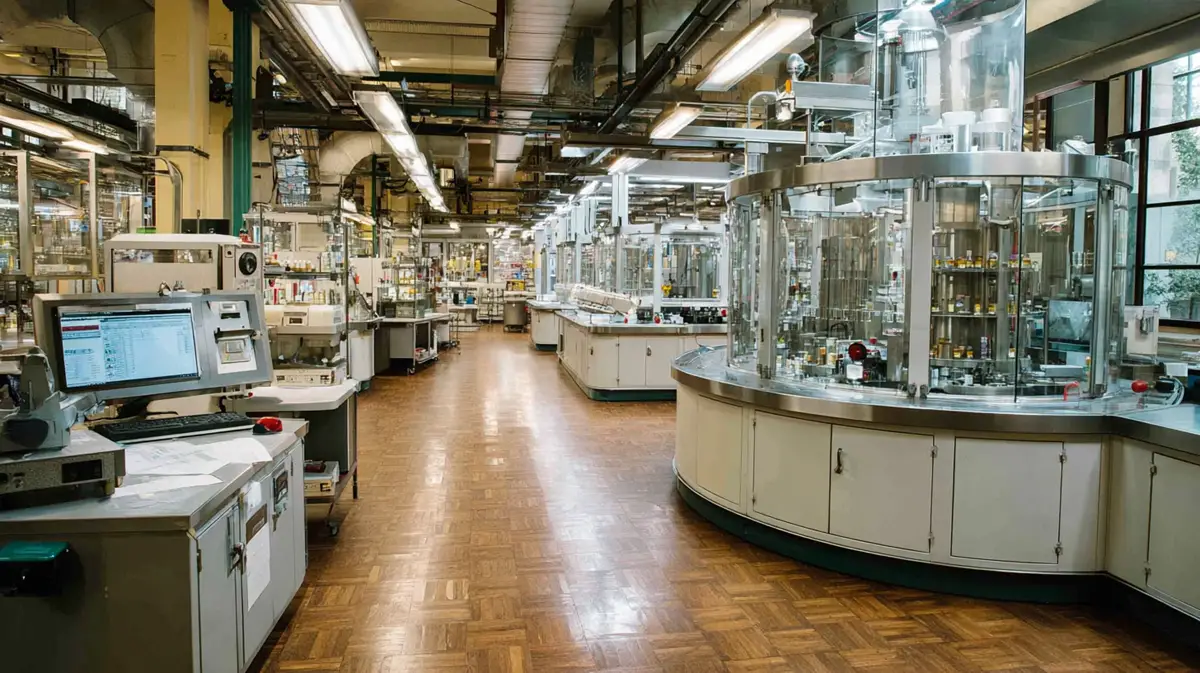Technology Transforms Pharmaceutical Packaging Innovation

The pharmaceutical industry stands at a technological crossroads. While drug discovery captures headlines, a quieter revolution unfolds in packaging—one that promises to reshape how medicines reach patients and how companies manage their supply chains.
Smart packaging systems now monitor temperature fluctuations during transport, alerting logistics teams to potential compromises before products reach their destination. Digital printing allows for real-time customisation of labels, whilst blockchain technology creates tamper-proof records of every package’s journey from factory to pharmacy.
These advances represent more than incremental improvements. They signal a fundamental shift toward intelligent, connected packaging that serves as both protector and communicator throughout the pharmaceutical supply chain.
Current Technology Reshaping Packaging Standards
Smart Labelling and Serialisation
Anti-counterfeiting measures have evolved beyond simple holograms. Today’s pharmaceutical packages feature unique digital identities created through advanced serialisation systems. Each product receives a distinct code that travels with it throughout the supply chain, creating an unbroken digital thread from manufacturer to end user.
QR codes and NFC chips embedded in packaging provide instant access to product information, batch details, and authentication data. This technology enables supply chain partners to verify authenticity at any point, dramatically reducing the risk of counterfeit medicines entering legitimate distribution channels.
Temperature-Sensitive Solutions
Cold chain management has transformed through IoT-enabled packaging solutions. Smart sensors continuously monitor temperature, humidity, and light exposure, transmitting data to cloud platforms where algorithms analyse patterns and predict potential issues.
These systems automatically generate alerts when environmental conditions drift outside acceptable parameters. Supply chain managers can then take corrective action immediately, rather than discovering problems after damage has occurred.
Sustainable Material Innovation
Environmental considerations drive significant packaging innovation. Biodegradable polymers and recyclable materials increasingly replace traditional packaging components without compromising product integrity.
Smart material selection algorithms help manufacturers choose optimal packaging configurations based on drug characteristics, shipping routes, and environmental impact calculations. This approach balances sustainability goals with regulatory requirements and product protection needs.
Digital Integration and Data Analytics
Modern pharmaceutical packaging generates vast amounts of data throughout its lifecycle. Advanced analytics platforms process this information to identify trends, predict failures, and optimise packaging design.
Machine learning algorithms analyse packaging performance across different shipping conditions, storage environments, and handling scenarios. This intelligence feeds back into design processes, enabling continuous improvement in packaging effectiveness and cost efficiency.
Digital twins—virtual replicas of physical packaging systems—allow manufacturers to test new designs and materials in simulated environments before committing to production. This capability accelerates innovation whilst reducing development costs and risks.
Regulatory Technology and Compliance
Regulatory compliance grows increasingly complex as global markets expand. Technology provides solutions through automated compliance checking systems that verify packaging meets requirements across multiple jurisdictions.
Electronic documentation systems create comprehensive audit trails for regulatory inspections. When authorities request information about specific batches or production runs, manufacturers can provide complete documentation instantly rather than spending weeks gathering paper records.
Artificial intelligence helps interpret evolving regulations and identifies potential compliance gaps before they become problems. These systems continuously monitor regulatory changes across relevant markets and flag packaging modifications that may be required.
Future Implications for the Industry
The trajectory toward fully connected packaging ecosystems will fundamentally alter pharmaceutical manufacturing and distribution. Supply chains will become increasingly transparent, with real-time visibility into every package’s status and location.
Predictive maintenance capabilities will emerge as packaging systems learn to identify signs of impending failure or degradation. Rather than reactive responses to problems, companies will take preventive action based on data-driven insights.
Personalisation at scale becomes possible through digital printing and flexible manufacturing systems. Packaging can be customised for specific markets, languages, or distribution channels without requiring separate production runs.
Integration with broader healthcare systems will create new possibilities for patient monitoring and adherence tracking. Pharmaceutical companies will gain insights into how their products perform in real-world conditions, informing both packaging improvements and drug development strategies.
Preparing for Technological Evolution
Success requires strategic investment in both technology and capabilities. Companies must build digital infrastructure capable of handling increasing data volumes whilst maintaining security and compliance standards.
Partnerships with technology providers become crucial as the complexity of modern packaging systems exceeds most pharmaceutical companies’ internal capabilities. Collaboration enables access to cutting-edge solutions without requiring massive internal development investments.
Workforce development ensures teams can operate and maintain sophisticated packaging systems. Technical skills requirements continue evolving as mechanical processes give way to digital solutions.
The pharma packaging revolution is underway, driven by technologies that promise greater efficiency, security, and sustainability. Companies that embrace these changes will gain competitive advantages through improved supply chain performance and enhanced product protection. Those who delay risk falling behind in an increasingly technology-driven marketplace.










